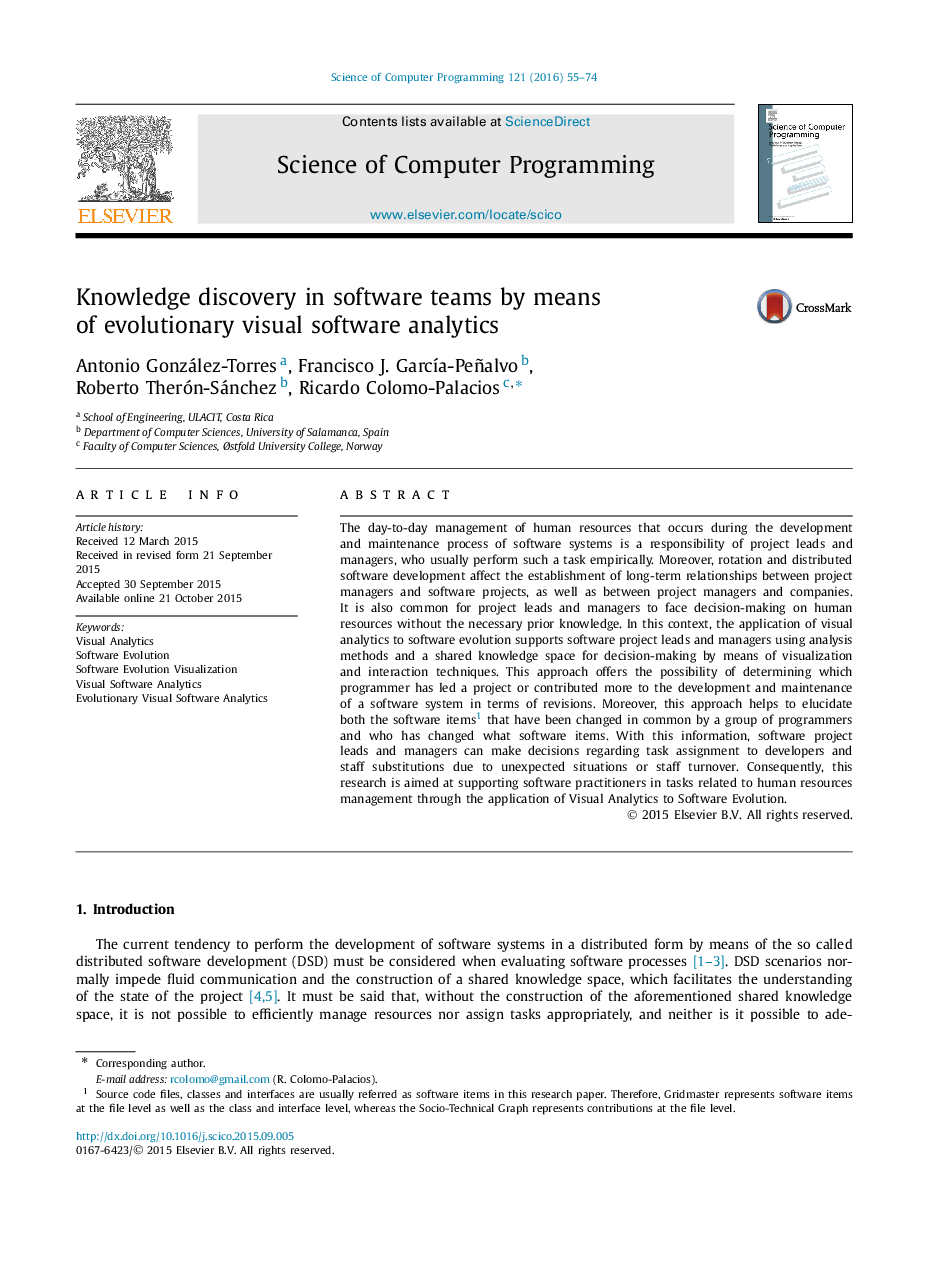| Article ID | Journal | Published Year | Pages | File Type |
|---|---|---|---|---|
| 433946 | Science of Computer Programming | 2016 | 20 Pages |
•Maleku supports software teams through the application of Visual Analytics.•New Visualizations are focused mainly in practitioners contributions.•Implemented visualizations require fewer reading and processing time.
The day-to-day management of human resources that occurs during the development and maintenance process of software systems is a responsibility of project leads and managers, who usually perform such a task empirically. Moreover, rotation and distributed software development affect the establishment of long-term relationships between project managers and software projects, as well as between project managers and companies. It is also common for project leads and managers to face decision-making on human resources without the necessary prior knowledge. In this context, the application of visual analytics to software evolution supports software project leads and managers using analysis methods and a shared knowledge space for decision-making by means of visualization and interaction techniques. This approach offers the possibility of determining which programmer has led a project or contributed more to the development and maintenance of a software system in terms of revisions. Moreover, this approach helps to elucidate both the software items1 that have been changed in common by a group of programmers and who has changed what software items. With this information, software project leads and managers can make decisions regarding task assignment to developers and staff substitutions due to unexpected situations or staff turnover. Consequently, this research is aimed at supporting software practitioners in tasks related to human resources management through the application of Visual Analytics to Software Evolution.
